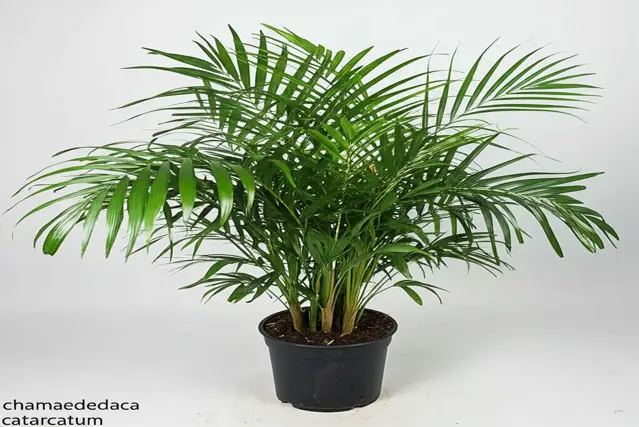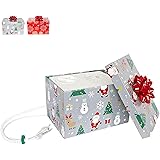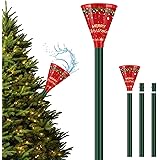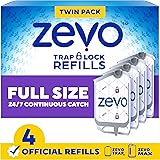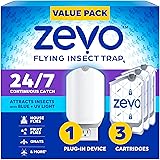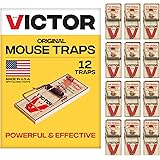The Chamaedorea cataractum, more commonly known as the Cat Palm or Cascade Palm, is a delightful and relatively easy-to-care-for houseplant that brings a touch of the tropics into any indoor space. Its lush, cascading fronds and compact size make it a popular choice for both beginner and experienced plant enthusiasts.
In 2025, the Cat Palm continues to be a trending houseplant, valued for its air-purifying qualities and its ability to thrive in indoor environments. This comprehensive guide will provide you with everything you need to know about growing and caring for your own Chamaedorea cataractum, ensuring a healthy and vibrant addition to your home or office.
This guide covers everything from understanding the Cat Palm’s origins and characteristics to detailed care instructions, troubleshooting common problems, and even propagation methods. We’ll also delve into current trends in houseplant care and any relevant regulations that might affect your plant.
Understanding the Chamaedorea Cataractum (Cat Palm)
Origins and Habitat
The Cat Palm is native to Southern Mexico and Central America, where it grows along riverbanks and in swampy, humid environments. Its natural habitat provides important insights into its care requirements. These palms are accustomed to consistent moisture, indirect sunlight filtered through the forest canopy, and high humidity.
Botanical Characteristics
Chamaedorea cataractum is a clumping palm, meaning it grows multiple stems from its base, creating a bushy appearance. Here’s a breakdown of its key features:
- Height: Typically reaches 3-6 feet indoors.
- Fronds: Feathery, cascading fronds that are a vibrant green. Each frond is composed of numerous leaflets.
- Stems: Slender, cane-like stems that emerge from the base.
- Flowers: Mature plants may produce small, yellow flowers on separate male and female plants (dioecious). Flowering is more common outdoors in suitable climates but can occur indoors under optimal conditions.
- Fruit: If pollination occurs, female plants will produce small, black berries. These are generally not edible and should be kept away from children and pets.
- Growth Rate: Moderate. With proper care, you can expect noticeable growth each year.
Why Choose a Cat Palm?
The Cat Palm offers numerous benefits, making it a desirable houseplant:
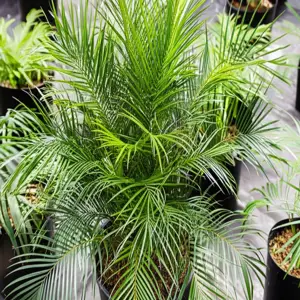
indoor palm
- Air Purification: Like many houseplants, Cat Palms help to purify the air by removing toxins such as formaldehyde, xylene, and toluene. A NASA Clean Air Study identified palms as effective air purifiers.
- Easy to Care For: Relatively low-maintenance, especially compared to some other palm species.
- Pet-Friendly: Generally considered non-toxic to cats and dogs, making it a safe choice for pet owners (although it’s always best to prevent pets from chewing on plants). Always consult with your vet for confirmation.
- Aesthetic Appeal: Its lush, tropical appearance adds beauty and vibrancy to any room.
- Adaptability: Tolerates a range of indoor conditions, although it thrives best in bright, indirect light and humid environments.
Cat Palm Care Guide: Creating the Ideal Environment
Providing the right environment is crucial for the health and longevity of your Cat Palm. Here’s a detailed breakdown of each key factor:
Light Requirements
Ideal: Bright, indirect light. Think of the light filtered through a forest canopy. An east-facing window is often ideal, providing gentle morning sun. A south- or west-facing window can also work, but be sure to filter the light with a sheer curtain to prevent scorching the leaves.
Acceptable: Moderate indirect light. Cat Palms can tolerate lower light conditions, but growth may be slower, and the fronds may become less vibrant. Avoid placing your Cat Palm in direct sunlight, which can cause sunburn and damage to the foliage.
Signs of Insufficient Light:
- Pale or yellowing leaves
- Leggy growth (long, stretched stems with sparse foliage)
- Slow or stunted growth
Signs of Too Much Light:
- Scorched or brown leaf tips and edges
- Faded or bleached leaves
Real-World Example: Sarah, a plant enthusiast living in a city apartment, noticed her Cat Palm’s leaves were turning pale green. After researching online and realizing it wasn’t getting enough light, she moved it closer to an east-facing window. Within a few weeks, the leaves began to regain their vibrant green color.
Watering
Key Principle: Keep the soil consistently moist but not soggy. Cat Palms prefer to be watered thoroughly when the top inch or two of soil feels dry to the touch.
Watering Frequency: Typically, watering is needed every 1-2 weeks, depending on the humidity, temperature, and pot size. Check the soil moisture regularly to determine the appropriate watering schedule for your plant.
Watering Technique:
- Water thoroughly until water drains from the drainage holes.
- Empty the saucer beneath the pot to prevent the plant from sitting in standing water, which can lead to root rot.
- Use room-temperature water. Cold water can shock the roots.
Overwatering vs. Underwatering:
- Overwatering: A common mistake that can lead to root rot. Signs of overwatering include yellowing leaves (especially older ones), wilting, and a musty smell coming from the soil.
- Underwatering: Can cause the leaves to become dry, crispy, and brown, especially at the tips and edges.
Water Quality: Cat Palms are sensitive to fluoride and chlorine in tap water. If possible, use filtered water, rainwater, or distilled water. If using tap water, let it sit out for 24 hours before watering to allow chlorine to evaporate.
Tip: Use a moisture meter to accurately gauge the moisture level of the soil. This can help you avoid both overwatering and underwatering.
Humidity
Ideal: High humidity (60% or higher). Cat Palms thrive in humid environments, mimicking their natural habitat.
Acceptable: Moderate humidity (40-60%). While they can tolerate moderate humidity, they will benefit from increased humidity, especially during dry winter months.
Increasing Humidity:
- Humidifier: The most effective way to increase humidity. Place a humidifier near your Cat Palm to create a consistently humid environment.
- Pebble Tray: Fill a tray with pebbles and add water to just below the top of the pebbles. Place the pot on top of the pebbles. As the water evaporates, it will increase the humidity around the plant.
- Grouping Plants: Grouping plants together can create a microclimate with higher humidity as plants transpire.
- Misting: Misting the leaves can provide a temporary boost in humidity, but it’s not a long-term solution. Mist in the morning to allow the leaves to dry before nightfall, which can help prevent fungal diseases.
Signs of Low Humidity:
- Brown leaf tips and edges
- Crispy leaves
- Spider mite infestations (spider mites thrive in dry conditions)
Temperature
Ideal: 65-80°F (18-27°C). Cat Palms prefer warm temperatures.
Acceptable: 60-85°F (15-29°C). Avoid exposing your Cat Palm to temperatures below 55°F (13°C), which can damage the plant.
Avoid: Sudden temperature fluctuations, drafts, and extreme heat or cold. Keep your Cat Palm away from heating vents, air conditioning units, and drafty windows.
Soil and Potting
Soil: Well-draining potting mix. A mixture of peat moss, perlite, and vermiculite is a good option. You can also use a commercially available palm potting mix.
Pot: A pot with drainage holes is essential to prevent root rot. Choose a pot that is slightly larger than the root ball. Repotting is typically needed every 1-2 years, or when the plant becomes root-bound (roots circling the inside of the pot).
Repotting:
- Timing: Spring or early summer is the best time to repot.
- Process: Gently remove the plant from its pot, loosen the root ball, and remove any dead or decaying roots. Place a layer of fresh potting mix in the bottom of the new pot, center the plant, and fill in around the sides with more potting mix. Water thoroughly after repotting.
Root Bound Signs:
- Roots growing out of the drainage holes
- Slowed growth
- The soil drying out very quickly
Fertilizing
Frequency: Every 2-4 weeks during the growing season (spring and summer). Reduce or stop fertilizing during the fall and winter months when the plant’s growth slows down.
Type of Fertilizer: Use a balanced liquid fertilizer diluted to half strength. Look for a fertilizer specifically formulated for palms or houseplants.
Application: Apply the fertilizer after watering the plant to avoid burning the roots.
Signs of Over-Fertilizing:
- Brown leaf tips and edges
- Salt buildup on the soil surface
- Stunted growth
Pruning
Purpose: To remove dead, damaged, or yellowing fronds. Pruning helps to maintain the plant’s appearance and health.
Technique: Use clean, sharp scissors or pruning shears to cut the fronds close to the base of the plant. Avoid cutting into the healthy stem tissue.
Removing Flowers: The flowers are not particularly showy and are often removed to encourage the plant to focus its energy on foliage growth. This is entirely a matter of preference.
Troubleshooting Common Cat Palm Problems
Even with the best care, Cat Palms can sometimes encounter problems. Here’s a guide to troubleshooting common issues:
Yellowing Leaves
Possible Causes:
- Overwatering: The most common cause. Reduce watering frequency and ensure the pot has adequate drainage.
- Underwatering: Check the soil moisture and water more frequently if the soil is dry.
- Nutrient Deficiency: Fertilize with a balanced liquid fertilizer during the growing season.
- Insufficient Light: Move the plant to a brighter location.
- Pest Infestation: Inspect the plant for pests such as spider mites or mealybugs.
Brown Leaf Tips and Edges
Possible Causes:
- Low Humidity: Increase humidity using a humidifier, pebble tray, or by grouping plants together.
- Dry Soil: Check the soil moisture and water more frequently if the soil is dry.
- Fluoride or Chlorine in Water: Use filtered water, rainwater, or distilled water.
- Fertilizer Buildup: Flush the soil by watering thoroughly until water drains from the drainage holes several times.
Drooping Leaves
Possible Causes:
- Overwatering: Reduce watering frequency and ensure the pot has adequate drainage.
- Underwatering: Check the soil moisture and water more frequently if the soil is dry.
- Temperature Stress: Protect the plant from extreme temperatures and drafts.
- Root Rot: Inspect the roots for signs of rot (soft, mushy, and brown or black). If root rot is present, repot the plant in fresh potting mix after removing the affected roots.
Pest Infestations
Cat Palms can be susceptible to common houseplant pests, including:
- Spider Mites: Tiny pests that create webs on the leaves and suck the sap. Increase humidity and wipe the leaves with a damp cloth or use insecticidal soap or neem oil.
- Mealybugs: Cottony, white pests that cluster on the stems and leaves. Wipe them off with a cotton swab dipped in rubbing alcohol or use insecticidal soap.
- Scale: Small, brown, shell-like pests that attach themselves to the stems and leaves. Scrape them off with your fingernail or a cotton swab dipped in rubbing alcohol or use insecticidal soap.
- Aphids: Small, green or black insects that cluster on new growth. Wash them off with a strong stream of water or use insecticidal soap.
Preventing Pest Infestations:
- Inspect your Cat Palm regularly for signs of pests.
- Maintain proper humidity levels.
- Keep the leaves clean by wiping them with a damp cloth.
- Isolate new plants before introducing them to your existing collection.
Propagating Chamaedorea Cataractum
While Cat Palms can be propagated, it’s not always straightforward. The most common and reliable method is through division.
Division
Timing: Spring or early summer is the best time to divide your Cat Palm.
Process:
- Carefully remove the plant from its pot.
- Gently separate the root ball into two or more sections, ensuring that each section has healthy roots and stems.
- Pot each section in its own pot with fresh potting mix.
- Water thoroughly after repotting.
- Keep the newly divided plants in a warm, humid location with bright, indirect light.
Important Considerations:
- Be gentle when separating the root ball to avoid damaging the roots.
- Use a clean, sharp knife or pruning shears to cut through any tightly intertwined roots.
- New growth may be slow initially as the plants adjust to their new pots.
Seed Propagation
While possible, seed propagation is less common and more challenging for home growers. Seeds require specific conditions to germinate and can take several months to sprout.
Current Trends and Statistics in Houseplant Care (2024)
The houseplant industry continues to boom in 2024, fueled by increased interest in indoor gardening, biophilic design, and the wellness benefits of plants. Here are some notable trends and statistics:
- Increased Plant Ownership: A 2023 survey by GardenResearch.com found that 77% of U.S. households participate in some form of gardening, and houseplants are a significant part of that trend. Millennials and Gen Z are driving much of this growth, valuing plants for their aesthetic appeal and mental health benefits.
- Focus on Sustainability: Consumers are increasingly seeking out eco-friendly gardening practices, including using organic potting mixes, recycled pots, and sustainable pest control methods. This trend is reflected in the growing availability of these products in the market.
- Air-Purifying Plants: The demand for air-purifying plants remains high, driven by concerns about indoor air quality. Plants like the Cat Palm, snake plant, and spider plant continue to be popular choices for their ability to remove toxins from the air.
- Rare and Exotic Plants: While easy-care plants like the Cat Palm are popular, there’s also a growing market for rare and exotic plants among experienced plant collectors. This has led to increased prices and demand for unique varieties.
- Online Plant Sales: Online plant retailers have seen significant growth in recent years, offering a convenient way for consumers to purchase plants from the comfort of their homes. Many nurseries and garden centers now offer online ordering and delivery services.
- Social Media Influence: Platforms like Instagram, TikTok, and Pinterest play a significant role in shaping houseplant trends and inspiring plant enthusiasts. #plantsofinstagram, #houseplants, and #plantparenthood are popular hashtags used to share plant photos and care tips.
- Biophilic Design: The concept of biophilic design, which incorporates natural elements into indoor spaces to improve well-being, is gaining traction in both residential and commercial settings. Houseplants are a key component of biophilic design, contributing to a more calming and restorative environment.
Data Source: Numerous sources contribute to the data above, including GardenResearch.com, the National Gardening Association, and various market research reports on the horticultural industry. Trends are also observed through social media engagement and online plant retailer activity.
Chamaedorea Cataractum and Regulations
While the Cat Palm is generally not subject to strict regulations, it’s important to be aware of the following:
- Import/Export Restrictions: If you are importing or exporting Cat Palms across international borders, you may need to comply with phytosanitary regulations to prevent the spread of plant diseases and pests. Check with your local agricultural authorities for specific requirements.
- Invasive Species Concerns: In some regions, certain palm species are considered invasive and may be subject to restrictions or regulations. Check with your local environmental agencies to ensure that the Cat Palm is not considered an invasive species in your area. However, Chamaedorea cataractum is not considered invasive in most regions, especially since it’s primarily grown indoors.
- Plant Health Certificates: Some states or countries may require plant health certificates for the sale or transportation of certain plants, including palms.
- CITES Regulations: CITES (the Convention on International Trade in Endangered Species of Wild Fauna and Flora) regulates the international trade of certain endangered plants and animals. While Chamaedorea cataractum is not currently listed under CITES, it’s always a good idea to check the CITES website for the most up-to-date information.
Disclaimer: Regulations can vary depending on your location. Always consult with your local agricultural authorities or environmental agencies for the most accurate and up-to-date information regarding plant regulations in your area.
Where to Buy a Chamaedorea Cataractum
Cat Palms are widely available for purchase at various locations, including:
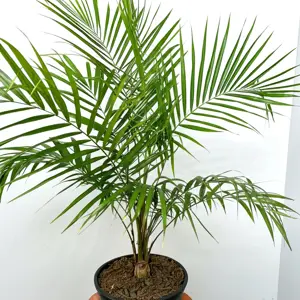
tropical plant
- Local Nurseries and Garden Centers: A great option for seeing the plant in person and getting advice from knowledgeable staff.
- Online Plant Retailers: Offer a wide selection of plants and convenient delivery options. Be sure to choose reputable retailers with good reviews.
- Big Box Stores: Home improvement stores and department stores often carry Cat Palms, especially during the spring and summer months.
- Farmers Markets and Plant Swaps: A good way to find unique plants and support local growers.
Tips for Choosing a Healthy Cat Palm:
- Inspect the leaves: Look for vibrant green leaves with no signs of yellowing, browning, or spotting.
- Check the stems: Ensure the stems are firm and upright.
- Examine the soil: The soil should be moist but not soggy. Avoid plants with dry, cracked soil or a musty smell.
- Look for pests: Inspect the plant carefully for signs of pests such as spider mites, mealybugs, or scale.
- Consider the pot: Make sure the pot has drainage holes.
Cat Palm vs. Other Similar Palms
The Cat Palm is often confused with other small palm varieties. Here’s a brief comparison:
| Palm Name | Chamaedorea Cataractum (Cat Palm) | Chamaedorea Elegans (Parlor Palm) | Dypsis Lutescens (Areca Palm) |
|---|---|---|---|
| Appearance | Clumping habit, cascading fronds. | Single-stemmed, upright fronds. | Clumping habit, golden stems. |
| Height | 3-6 feet indoors. | 2-6 feet indoors. | 6-8 feet indoors. |
| Light Requirements | Bright, indirect light. | Bright, indirect light. | Bright, indirect light. |
| Watering | Keep soil consistently moist. | Allow soil to dry slightly between waterings. | Allow soil to dry slightly between waterings. |
| Humidity | High humidity preferred. | Moderate humidity. | Moderate humidity. |
| Pet-Friendly | Generally considered non-toxic. | Generally considered non-toxic. | Generally considered non-toxic. |
Key Differences:
- Growth Habit: The Cat Palm’s clumping habit and cascading fronds distinguish it from the single-stemmed Parlor Palm and the more upright Areca Palm.
- Humidity Requirements: Cat Palms prefer higher humidity levels than Parlor Palms or Areca Palms.
- Size: Areca Palms tend to grow larger than Cat Palms and Parlor Palms.
Creative Uses for Cat Palms in Home Decor
Cat Palms are versatile plants that can be used in a variety of ways to enhance your home decor:
- Statement Piece: Place a large Cat Palm in a decorative pot to create a focal point in your living room or entryway.
- Bathroom Oasis: The Cat Palm’s love for humidity makes it an excellent choice for bathrooms.
- Office Decor: Add a touch of greenery to your office space with a Cat Palm on your desk or in a corner.
- Hanging Baskets: The cascading fronds of the Cat Palm make it a beautiful addition to hanging baskets.
- Plant Grouping: Combine Cat Palms with other tropical plants to create a lush, jungle-like effect.
- Privacy Screen: Use several Cat Palms to create a natural privacy screen on a balcony or patio.
Decorating Tip: Choose pots that complement your existing decor. Consider using pots made of natural materials like terracotta or ceramic to enhance the natural look of the Cat Palm.
Advanced Cat Palm Care Techniques
For experienced plant enthusiasts looking to take their Cat Palm care to the next level, consider these advanced techniques:
- Hydroponics: Growing Cat Palms hydroponically (in water without soil) can be a fun and rewarding experiment. Research the specific nutrient requirements for hydroponic palm cultivation.
- Semi-Hydroponics: Using LECA (lightweight expanded clay aggregate) as a growing medium combines the benefits of hydroponics and traditional soil-based growing.
- Custom Soil Mixes: Experiment with different soil mix recipes to find the perfect blend for your Cat Palm’s specific needs. Consider adding amendments like coco coir, worm castings, or biochar.
- Controlled Environment: Creating a controlled environment with regulated temperature, humidity, and lighting can optimize your Cat Palm’s growth and health.
- Air Layering: This propagation technique involves encouraging roots to grow on a stem while it’s still attached to the parent plant. While not commonly used for Cat Palms, it’s a possible method for propagating larger specimens.
Note: Advanced techniques require more knowledge and experience. Do your research before attempting any of these methods.
The Role of Cat Palms in Interior Design Trends
Cat Palms align perfectly with several contemporary interior design trends:
- Biophilic Design: As mentioned earlier, biophilic design emphasizes connecting with nature in indoor spaces. Cat Palms, with their lush foliage and tropical aesthetic, are ideal for creating a biophilic environment.
- Japandi Style: Japandi combines Japanese minimalism with Scandinavian functionality. Cat Palms can add a touch of organic warmth and texture to Japandi-style interiors.
- Bohemian Decor: Bohemian decor celebrates eclecticism and natural elements. Cat Palms fit well with the relaxed, free-spirited vibe of bohemian interiors.
- Minimalist Design: Even in minimalist spaces, a single well-placed Cat Palm can add a pop of life and color without cluttering the room.
- Urban Jungle: The urban jungle trend involves filling your home with a variety of plants to create a vibrant, indoor ecosystem. Cat Palms are a great addition to any urban jungle.
Design Tip: Consider the color and texture of your Cat Palm when incorporating it into your interior design scheme. Use complementary colors and textures to create a cohesive and visually appealing space.
Caring for Cat Palms in Different Climates
While Cat Palms are primarily grown indoors, here’s how to adapt your care routine depending on your climate:
- Humid Climates: In humid climates, you may need to water less frequently and be extra vigilant about preventing fungal diseases. Ensure good air circulation around the plant.
- Dry Climates: In dry climates, humidity is key. Use a humidifier, pebble tray, or group plants together to increase humidity levels. Water more frequently.
- Cold Climates: Protect your Cat Palm from drafts and cold temperatures. Avoid placing it near windows or doors during the winter months.
- Warm Climates: Cat Palms can tolerate warm temperatures, but avoid exposing them to direct sunlight, which can cause sunburn.
Adaptation is Key: Observe your Cat Palm closely and adjust your care routine based on its specific needs and the prevailing climate conditions.
Common Myths About Cat Palm Care
Let’s debunk some common myths about Cat Palm care:
- Myth: Cat Palms need direct sunlight. Fact: Cat Palms prefer bright, indirect light. Direct sunlight can scorch their leaves.
- Myth: Cat Palms are difficult to care for. Fact: Cat Palms are relatively easy to care for, especially compared to some other palm species.
- Myth: You should never let the soil dry out completely. Fact: While Cat Palms prefer consistently moist soil, allowing the top inch or two to dry out between waterings can help prevent overwatering and root rot.
- Myth: Misting is enough to provide adequate humidity. Fact: Misting provides only a temporary boost in humidity. A humidifier or pebble tray is more effective for long-term humidity control.
- Myth: You should fertilize your Cat Palm year-round. Fact: Reduce or stop fertilizing during the fall and winter months when the plant’s growth slows down.
Trust the Experts: Rely on reputable sources of information and your own observations to determine the best care practices for your Cat Palm.
The Future of Cat Palm Popularity
Given current trends, the popularity of the Chamaedorea cataractum is likely to continue rising. Here’s why:
- Easy Care: Its relatively low-maintenance nature makes it appealing to a wide range of plant enthusiasts, including beginners.
- Air Purification: The increasing awareness of indoor air quality will continue to drive demand for air-purifying plants like the Cat Palm.
- Aesthetic Appeal: Its lush, tropical appearance fits well with various interior design styles.
- Pet-Friendly: Its non-toxic nature makes it a safe choice for pet owners.
- Compact Size: Its manageable size makes it suitable for apartments, offices, and other small spaces.
Future Trends: Expect to see more creative uses of Cat Palms in interior design, as well as increased availability of different varieties and cultivars.
Resources for Further Learning
Here are some valuable resources for learning more about Cat Palm care and houseplant care in general:
- University Extension Services: Many universities offer free or low-cost resources on plant care through their extension services.
- Botanical Gardens and Arboretums: Visit your local botanical garden or arboretum to see Cat Palms and other plants in person and learn from experts.
- Online Plant Forums and Communities: Connect with other plant enthusiasts online to share tips, ask questions, and learn from each other. Look for reputable forums with experienced members.
- Books and Magazines: There are numerous books and magazines dedicated to houseplant care. Look for publications that are up-to-date and written by knowledgeable authors.
- Reputable Websites and Blogs: Be sure to vet your sources carefully, as not all online information is accurate. Look for websites and blogs that are written by horticulturists or experienced plant growers.
Legal Disclaimer
The information provided in this guide is for general informational purposes only and does not constitute professional advice. Plant care can vary depending on individual circumstances and environmental conditions. Always consult with a qualified horticulturalist or plant expert for specific advice tailored to your situation. The author and publisher are not responsible for any damages or losses resulting from the use of this information.
This guide includes information that was deemed accurate at the time of writing (October 2024). However, regulations, trends, and scientific understanding can change over time. Always verify information with current sources before making decisions about plant care.
Visual Guide: Recognizing Common Cat Palm Issues
Having a visual reference can be incredibly helpful when diagnosing problems with your Cat Palm. Below is a description of what to look for when identifying common issues, please note that as a language model I cannot generate images, but will provide a thorough explanation of how to identify the issue based on sight.
1. Overwatering:
- Leaf Color: Leaves may appear yellow, particularly the older, lower leaves. They might also have a translucent, almost water-soaked look.
- Stem/Base: Check the base of the plant near the soil line. If it’s mushy, soft, or emitting a foul odor, it’s a strong indication of overwatering and potential root rot.
- Soil: The soil will be consistently soggy and may have a greenish or slimy appearance.
2. Underwatering:
- Leaf Color: Leaf tips and edges will turn brown and crispy. The leaves may also curl inwards and feel dry to the touch.
- Overall Appearance: The entire plant may look droopy and wilted, giving the impression that it’s thirsty.
- Soil: The soil will be bone dry, pulling away from the sides of the pot.
3. Insufficient Light:
- Leaf Color: Leaves might lose their vibrant green color and become pale or yellowish.
- Growth Pattern: The plant may exhibit leggy growth, meaning the stems are long and stretched with sparse foliage, as the plant is reaching for more light.
- Overall Vigor: General growth will be slow or stunted.
4. Excessive Light (Sunburn):
- Leaf Appearance: Sunburn typically manifests as bleached or faded patches on the leaves, especially on the areas directly exposed to the sun. Brown, crispy spots may also appear.
5. Low Humidity:
- Leaf Tips: Brown, crispy leaf tips are a classic sign of low humidity. This often starts at the very tip of the leaf and progresses downwards.
6. Spider Mites:
- Webs: Look for fine webbing between the leaves and stems, especially on the undersides of the leaves.
- Pests: These are tiny pests and hard to spot without close inspection. Look closely on the undersides of the leaves for tiny moving dots.
- Leaf Appearance: Leaves may have a stippled or speckled appearance due to the mites sucking the sap. They can also become yellowed or bronze-colored.
Seasonal Care Adjustments for Cat Palms
Cat Palms, like most houseplants, have different needs depending on the season. Adjusting care accordingly helps maintain their health year-round.
Spring & Summer (Active Growth Period)
-
Watering: Increase frequency as the plant grows faster. Keep soil consistently moist.
-
Fertilizing: Apply a balanced liquid fertilizer every 2-4 weeks.
-
Light: Ensure bright, indirect light but protect from harsh midday sun.
-
Humidity: Maintain high humidity (60%+), especially in dry climates.
Fall & Winter (Dormant Period)
-
Watering: Reduce frequency—allow the top 2 inches of soil to dry before watering.
-
Fertilizing: Stop fertilizing or reduce to once every 6-8 weeks.
-
Light: Move closer to a window if natural light decreases.
-
Humidity: Combat dry indoor air with a humidifier or pebble tray.
Frequently Asked Questions (FAQs) About Cat Palms
1. Can Cat Palms grow in low light?
While they tolerate moderate light, they thrive in bright, indirect light. Low light leads to slower growth and pale leaves.
2. How often should I repot my Cat Palm?
Every 1-2 years, or when roots start circling the pot. Spring is the best time for repotting.
3. Are Cat Palms safe for pets?
Yes! They are non-toxic to cats and dogs, but ingestion may cause mild stomach upset.
4. Why are my Cat Palm’s leaves turning brown?
Common causes:
-
Low humidity
-
Tap water (fluoride/chlorine sensitivity)
-
Over/underwatering
-
Too much direct sunlight
5. How do I revive a dying Cat Palm?
-
Check roots: Trim any rotten roots and repot in fresh soil.
-
Adjust watering: Ensure proper moisture levels.
-
Increase humidity: Use a humidifier or pebble tray.
-
Prune dead leaves: Remove damaged foliage to redirect energy.
Styling Tips: Incorporating Cat Palms into Modern Home Decor
1. Bohemian Jungle Vibes
-
Pair with macramé hangers or woven baskets.
-
Mix with other tropical plants like Monsteras and Pothos.
2. Minimalist Aesthetic
-
Use a sleek, neutral pot (white, gray, or black ceramic).
-
Place in a well-lit corner as a standalone statement piece.
3. Bathroom Oasis
-
Thrives in high humidity near a shower or bathtub.
-
Complements natural materials like bamboo and stone.
4. Office Greenery
-
Adds life to workspaces while improving air quality.
-
Choose a compact pot for desks or shelves.
Final Thoughts: Why the Cat Palm is a Must-Have in 2025
The Chamaedorea cataractum remains a top choice for plant lovers due to its:
✅ Easy-care nature (great for beginners).
✅ Air-purifying benefits (removes indoor toxins).
✅ Pet-friendly status (safe for cats & dogs).
✅ Versatile styling options (fits any decor).
By following this guide, you can enjoy a thriving, lush Cat Palm that enhances your living space for years to come.
Where to Buy a Healthy Cat Palm in 2025
-
Local nurseries (best for inspecting before purchase).
-
Online plant shops (e.g., The Sill, Bloomscape, Etsy).
-
Home improvement stores (Lowe’s, Home Depot).
Pro Tip: Look for plants with vibrant green leaves, no pests, and healthy roots.
Have More Questions?
Drop them in the comments below, and we’ll help you keep your Cat Palm thriving! 🌿💚
Legal Disclaimer: This guide is for informational purposes only. Always consult a horticulturist for plant-specific advice.
Auto Amazon Links: No products found.
Perfect Plants Christmas Tree Saver 8oz. | Easy Use Xmas Tree Preserver Food | Have Healthy Green Christmas Trees All Holiday Season
$9.97 (as of November 25, 2025 23:26 GMT +00:00 - More info- Product prices and availability are accurate as of the date/time indicated and are subject to change. Any price and availability information displayed on [relevant Amazon Site(s), as applicable] at the time of purchase will apply to the purchase of this product.
Wilt-Pruf® Christmas Tree/Cutting Preserver Spray |Preserves Christmas Trees, Wreaths, Garlands, Cuttings and Carved Pumpkins | Reduces Needle Drop | Keeps Cut Trees Fresh Longer | Natural (32 oz)
$21.99 (as of November 25, 2025 23:26 GMT +00:00 - More info- Product prices and availability are accurate as of the date/time indicated and are subject to change. Any price and availability information displayed on [relevant Amazon Site(s), as applicable] at the time of purchase will apply to the purchase of this product.
Christmas Tree Watering Funnel – 39 Inch Adjustable 3-Section Design, Reusable & Spill-Free, Easy Watering for Real Christmas Trees
$10.70 (as of November 25, 2025 23:26 GMT +00:00 - More info- Product prices and availability are accurate as of the date/time indicated and are subject to change. Any price and availability information displayed on [relevant Amazon Site(s), as applicable] at the time of purchase will apply to the purchase of this product.
HoHoHoH2o Automatic Christmas Tree Watering System Device, Santa’s Tree Helper Keeps Your Christmas Tree Healthy and Fresh, Refillable 2.5 gallons Capacity Box - Silver/Festive
$99.95 (as of November 25, 2025 23:26 GMT +00:00 - More info- Product prices and availability are accurate as of the date/time indicated and are subject to change. Any price and availability information displayed on [relevant Amazon Site(s), as applicable] at the time of purchase will apply to the purchase of this product.
IPOOLTENG Christmas Tree Watering Funnel 3 Tube 1 Funnels 40 Inch - 3 Section Plastic Christmas Tree Funnel Waterer, Long Funnels for Watering Trees, No More Bending to Water
$13.59 (as of November 25, 2025 23:26 GMT +00:00 - More info- Product prices and availability are accurate as of the date/time indicated and are subject to change. Any price and availability information displayed on [relevant Amazon Site(s), as applicable] at the time of purchase will apply to the purchase of this product.
Zevo Flying Insect Trap Official Refill Cartridges - Fits Both Zevo Trap & MAX Indoor Fly Trap - Authentic Trap+Lock Technology to Catch Gnats, House & Fruit Flys (4 Official Refill Cartridges)
$14.97 (as of November 25, 2025 14:47 GMT +00:00 - More info- Product prices and availability are accurate as of the date/time indicated and are subject to change. Any price and availability information displayed on [relevant Amazon Site(s), as applicable] at the time of purchase will apply to the purchase of this product.
Traeger Grills Signature Blend 100% All-Natural Wood Pellets for Smokers and Pellet Grills, BBQ, Bake, Roast, 18 lb. Bag
$19.99 (as of November 25, 2025 14:47 GMT +00:00 - More info- Product prices and availability are accurate as of the date/time indicated and are subject to change. Any price and availability information displayed on [relevant Amazon Site(s), as applicable] at the time of purchase will apply to the purchase of this product.
TERRO Ant Killer Bait Stations T300B - Liquid Bait to Eliminate Ants - Bait System - 12 Count Stations for Effective Indoor Ant Control
$10.86 (as of November 25, 2025 14:47 GMT +00:00 - More info- Product prices and availability are accurate as of the date/time indicated and are subject to change. Any price and availability information displayed on [relevant Amazon Site(s), as applicable] at the time of purchase will apply to the purchase of this product.
Zevo Flying Insect Trap & 3 Refill Cartridges - Plug in Fly Trap & Indoor Bug Catcher for Gnats, House & Fruit Flies - Blue & UV Light Technology, Mess-Free Alternative to Bug Zapper
$25.96 (as of November 25, 2025 14:47 GMT +00:00 - More info- Product prices and availability are accurate as of the date/time indicated and are subject to change. Any price and availability information displayed on [relevant Amazon Site(s), as applicable] at the time of purchase will apply to the purchase of this product.
Victor Mouse Traps M150-12, Metal Pedal, Sustainably Sourced FSC Wood, Wooden Mouse Traps, 12 Metal Pedal Traps
$9.79 (as of November 25, 2025 14:47 GMT +00:00 - More info- Product prices and availability are accurate as of the date/time indicated and are subject to change. Any price and availability information displayed on [relevant Amazon Site(s), as applicable] at the time of purchase will apply to the purchase of this product.

